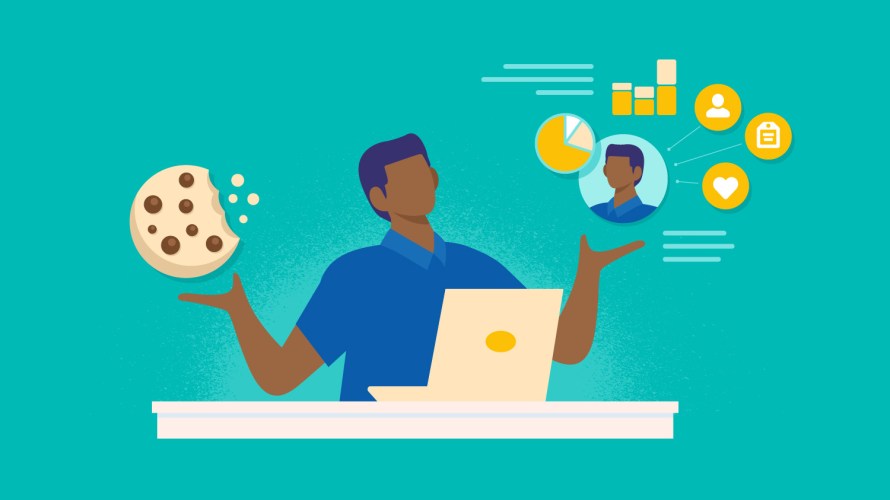Why the Google Cookies News Shouldn’t Alter Your Data Strategy

Counting on first-party data and personalization is even more important in a privacy-first, AI-driven world
Google surprised a lot of people when it announced in a recent blog post that – after more than four years of saying the opposite – it was not going to phase out cookies in its market-leading Chrome browser after all. Instead, it would ask users to opt in to tracking and focus on developing post-cookie solutions. No timelines were given.
Reactions ranged from coffee-spilling shock to languid bemusement. Now that the cookie dust has settled, a better reaction might be: So what’s next? Smart marketers and savvy CX professionals probably won’t do anything more than make a few tweaks to their media plans and keep pushing ahead with their post-Google-cookie data strategies.
Why? There are good reasons to believe third-party cookies won’t be around forever anyway. Gathering usable customer data increasingly requires consent and “opting-in,” which relies on trust with the brand. Personalization is more important than ever and is built from first-party data that is acquired from engagement on the brand’s channels. All of this points to a platform-based approach to gaining trust, collecting consent, organizing data and providing personalized engagement – one that doesn’t rely on cookies but uses the same customer data for their entire experience with the brand.
In this post, we’ll explain why Google cookies aren’t keepers and first-party data is still a superpower. Then we will look at why personalization and AI won’t work without first-party data.
In this blog you will learn:
- Google cookies are not a long-term solution
- Getting consumers to opt in takes trust
- Personalization needs first-party data to work well
- Your data strategy doesn’t change with the Google cookies announcement
Google cookies are not a long-term solution
Cookies are little text files placed on your computer that websites can use to recognize your browser. They’re anonymous – that is, they don’t include any personally-identifiable information – but can be used to profile and target you on the web.
Invented in 1995 by a 24 year-old engineer at Netscape (the first commercial web browser), the cookie was supposed to be a tool for filling online shopping carts. Its prolific use by digital advertisers was a kind of work-around that created an overly complex ad tech infrastructure over the years.
Today, Google’s Chrome is the only browser that embraces cookies. This matters because Chrome has the largest share (62%) of browser traffic, and Google has a roughly $30 billion cookie-based media network business. Apple’s Safari browser (24% share) started to phase out cookies and other forms of cross-site tracking in 2017.
Read more
Consequently, 24% of browser traffic is already cookieless. But even that share overstates the importance of cookies. The majority of digital ad spending – even for Google – is on channels that do not use cookies, including paid search, mobile apps, connected TV and streaming. Meta’s Facebook and Instagram together account for $1 in $5 of all digital ad spending and don’t use cookies in their apps.
Simply put, we’re already in the post-cookie world. Even Google’s 370-word blog post downplayed cookies in favor of the Privacy Sandbox, a library of initiatives proposed by the web community to support privacy-safe personalization, measurement and ads.
Without getting into the details, let’s just say the Privacy Sandbox probably won’t be delivering a cookie-replacement soon. It has the Promethean task of trying to gain consensus among publishers (who can lose 60% of their revenue without cookies), advertisers, privacy advocates and regulators.
That consensus has not happened yet.
(Back to top)
Getting consumers to opt in takes trust
Google’s intention is to get web browsers to “opt in” to cookies. Requiring an opt-in would make the Chrome users’ experience more like the experience with apps on our iPhones, where we are asked to move a lever to consent to “tracking.”
Opt-in rates in general are so low that there is a convincing argument that requiring an opt-in allows Google to phase out the cookie without doing it itself. According to an Ad Age report, about 70% to 80% of Apple iOS users opt out of tracking when it’s requested.
While asking for an opt-in makes some sense, it raises considerations for marketers and customer experience professionals. One of these is the so-called “Privacy Paradox,” which argues that there is a gap between what consumers say and what they do around data privacy. For instance, our research shows that 80% of consumers say they feel little control over their data – and yet 48% will happily share it with brands they trust.
The key word here is “trust.” If Google’s announcement tells us anything, it is that in the near future any data we collect from consumers – anonymous or not – will require their knowledge and consent. That’s not a problem for a trusted brand but will be for anyone else.
How does a brand build trust? Research into the Privacy Paradox suggests some guidelines:
- Be clear about what data you collect and how you use it
- Give the person a sense of control – including the ability to change their mind
- Explain the benefits of sharing data in concrete, positive terms
- Don’t assume people’s attitudes to privacy are the same
Another way to build trust is more obvious: do good work. Sell good products, offer good services and be easy to work with. Some studies show a clear correlation between trust and customer satisfaction.
In other words, there is no short-cut to trust.
Personalization needs first-party data to work well
Consumers expect personalization. They yearn for an experience that is useful and does not ask them to repeat themselves or spend time looking for what they want. The challenge is that personalization requires first-party data to work. You can’t give someone something useful if you don’t know them at all.
Not surprisingly, the ability to deliver more insightful, relevant experiences is increasingly important for its competitive juice. In our most recent State of Marketing report, we identified personalization as the biggest differentiator between high- and low-performing organizations. High-performers say they can “fully personalize” across an average of six channels, while laggards handle only three.
Where does first-party data come from? Not cookies. A dozen sources were cited by more than 40% of respondents: most commonly used were customer service and transaction data, mobile apps, web accounts and loyalty programs. In recent years, there has been a wave of innovation around how to provide value in exchange for first-party data – from loyalty programs to gamification and altruism – and that work will continue.
The importance of first-party data is not a revelation to most of us. In fact, we’ve been talking about it on this blog for years and years. We’ve also been talking about the importance of newer technologies like Salesforce Data Cloud, which was specifically designed to organize, analyze and activate massive amounts of customer data – most of it first-party data.
An added benefit of Salesforce Data Cloud is that it’s part of the Einstein 1 Platform, which brings together customer data, CRM and trusted AI to help companies improve the end-to-end customer experience.
Your data strategy doesn’t change with the Google cookies announcement
Earlier this year, my colleague Gabe Joynt argued that while first-party data is the bedrock of customer engagement, it is not easy to master. Evolving from a reliance on anonymous third-party IDs like cookies to a world running on consented first-party data requires a change in culture, tools and tactics as well as technology.
Luckily, most enterprises are already on this journey. The rewards are not only better personalization and customer relationships, based on data, but an enhanced ability to support emerging AI and generative AI opportunities. These range from personalized content creation to faster offers and recommendations to more targeted ads on social networks – and we’ve only just begun.
So our guidelines to prepare for the post-cookie world still hold:
- Redevelop your people, processes and technologies to handle first-party data
- Give users a compelling reason to share their data
- Build relationships with your users so they want to sign up to receive updates
- Implement a strong data management system like Salesforce Data Cloud to assess and evaluate customer information
- Learn how to use your data to make decisions
The bad news is that we still can’t rely on cookies anymore. The good news is that the data strategy you’ve been developing to handle the “cookie-pocalypse” is more valid than ever.
Say hello to Data Cloud
Want to improve your personalization and break down silos that lead to a disjointed customer experience? Data Cloud brings it all under one platform, having all your teams working together.




























